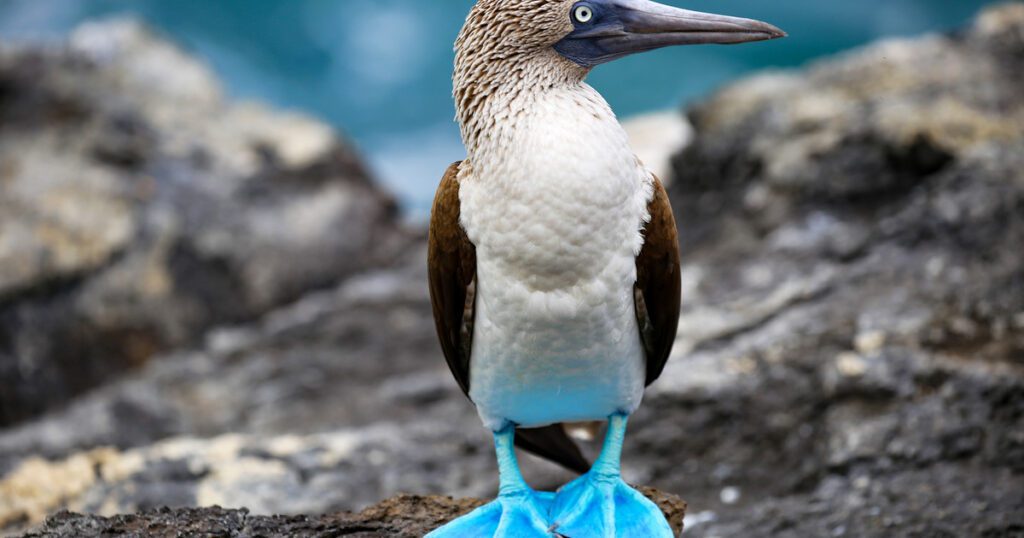Native to the western coast of the Americas from Mexico to Peru, the blue-footed booby (Sula nebouxii) is a marine bird recognised by its bright sky-blue webbed feet.
How do their feet turn this colour? Through their diet, they ingest carotenoid pigments, which become concentrated in their feet. These pigments act as antioxidants and immune system stimulants in addition to giving the birds their unique appearance. However, when the pigments are used by the birds’ feet, they cease to provide any immune system benefits.
The reason blue feet have survived as a trait in this species is because they seem to make males more attractive to females during courtship. Over time, female blue-footed boobies have adapted to recognise blue feet as a sign of good health—likely because it signals a carotenoid-filled diet.
The blue-footed booby is classed as least concern as it has a large range and population. However, the population inhabiting the Galápagos Islands is suffering a food shortage. These birds feed on clupeid fish, which are declining in this area.
12. Darwin’s frog
Named after the scientist who discovered the species, Darwin’s frog (Rhinoderma darwinii), also called Southern Darwin’s frog, is a small frog species recognisable by its bright green back and its elongated snout, which gives its head a triangular shape. This frog is native to the austral forest of Chile and Argentina.
Darwin’s frog has an unusual reproductive method. The female frog lays the eggs, but the male frog broods the tadpoles inside its vocal sac. When they have completed their metamorphosis, the young frogs hop out of their father’s mouth. This species is the only known amphibian to do so.
Classed as endangered, Darwin’s frog faces threats to its survival. In the northern part of its range, pine forestry and drought pose a danger. In the southern part, the frogs are impacted by clear-cutting and the replacement of native trees with plantations.
13. Paradoxical frog
A species with a name like the paradoxical frog (Pseudis paradoxa) surely stands out from the rest. Also known as the shrinking frog, this frog begins as a very large tadpole before undergoing metamorphosis, after which it becomes a much smaller adult frog—only about a quarter to a third of its former size. The tadpoles can reach about 220 milimetres (almost 9 inches) in length, while the fully grown—or fully shrunken—adults are about 45-65 milimetres (about 2 to 3 inches).
Found in and around bodies of water throughout forest, savannah, and grassland ecosystems, the paradoxical frog is classed as least concern. However, agricultural activities and human settlements pose threats to the future of South America’s amphibians.
14. Giant river otter
Source link : https://www.ifaw.org/international/journal/16-most-fascinating-animals-south-america
Author :
Publish date : 2023-12-22 03:00:00
Copyright for syndicated content belongs to the linked Source.
